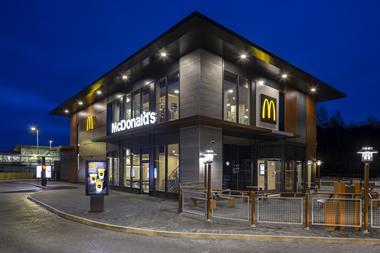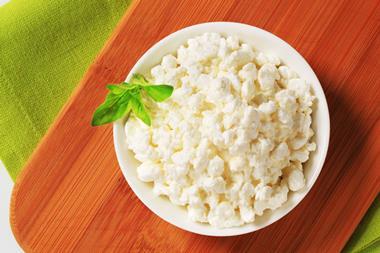New generation is hot to trot in a sector loaded with potential
The men's lifestyle sector is one in which every publisher wants a slice of the action. Nine publishing houses feature in the top 10 best sellers through the newstrade, and the number of publications in the group is 17. Six years ago there were only six.
Given the remarkable success of the leading title in the sector, Emap Elan's FHM, it is no surprise that publishers are taking a keen interest in men's lifestyle.
FHM posted a monster 715,756 circulation in the latest ABCs the majority through newsstand sales - selling more copies than its nearest rivals (IPC's Loaded and Dennis' Maxim) combined. The magazine also outsells every women's glossy on the newsstands not to mention must-stock weeklies such as TV Times and Woman's Own.
"FHM is the biggest selling monthly in Europe," says editor Anthony Noguera, who puts its success, in part, down to its wide appeal. "While five years ago perhaps a typical reader was a 28-year-old male, today we have readers from 15 to 50 and 22% of them are female," he says.
Noguera is keen to dismiss the popular perception of FHM as a lads' magazine. "It's an easy tag for people to put on us, but I don't think FHM is a lad's mag we just wouldn't be able to pull in that many readers if it was," he says.
"IPC's Loaded and Cabal's Front are really the only two lads' magazines in the market - we're more of a general lifestyle magazine."
Noguera says FHM's covers are crucial to the magazine's success. "One reason we are so far ahead of the competition is that we have better stars on the cover in our last issue we had Britney Spears and our next cover is Charlie's Angels," he says.
"Sales are definitely affected by who is on the cover, and this is why it is important for retailers to make sure that the covers can be seen on the shelves."
Noguera also cites clever marketing as key to lifting sales. "It doesn't matter how good the magazine is, you still need to make people pick it up in the shop that's something we work very hard on. Our marketing department works very closely with editorial so, for example, our art editor will design the display boards for the shops.
"We do everything from this office, from booking the cover star to placing the display boards."
While FHM has been gaining readers, its nearest rival, IPC's Loaded, was down 8.9% year on year in the latest ABC audit.
However, change is afoot at IPC with new staff being drafted in from rival magazines the new publishing director for Loaded and Later, IPC's title for the older male, is Eric Fuller, who launched Maxim from Dennis Publishing; Mike Soutar, ex-FHM editor and recently back from working on Maxim in the US, is the new managing director and a new editor for Loaded is due to be appointed in the next few weeks. In addition, a new marketing director, Vijay Solanki, had been drafted in from Capital Radio.
Fuller says that Loaded will continue to be aimed at "a mass audience of men in their early to mid-20s". He adds: "We have no plans to change the core proposition but the editorial execution may need some re-invigoration. In practical terms that means spring cleaning a couple of editorial sections and introducing some fresher ideas."
Fast catching up with Loaded in newsstand sales is Dennis Publishing's Maxim. Frzana Rehman, newstrade manager at Maxim, says the magazine aims for "a slightly more mature reader than Loaded or Front", pitching itself against FHM. She says: "It is all coming together for Maxim it was redesigned two issues ago and the US version has just broken the two million barrier and this is helping the British magazine in terms of awareness."
One of the most consistent performers in the sector is Men's Health from Rodale. Publisher Ralph Boon says: "Men's Health has the fastest growing newstrade sales of all of the main men's titles over the last year, up 12.2% to 203,000. By comparison that is double the sales of GQ, and five times Esquire.
"The key reason for success is investing heavily in the editorial product and working closely with readers to ensure that this title delivers consistently every time."
Boon describes Men's Health as "a lifestyle magazine that provides positive, practical and personal information on ways to look after yourself, fitness, health, career, relationships and grooming all delivered with a good sense of humour".
The other title that retailers should keep an eye on is The Face. Following a revamp from its new publisher Emap Elan the style bible is selling 15% more copies through the newstrade than last year.
But despite its success with The Face and FHM, Emap Elan's Sky Magazine has fared worse than any other in the sector, with sales falling a massive 46.3% year on year. Upmarket men's titles Esquire, from the National Magazine Company, and Condé Nast's GQ have also seen sales drop recently.
While most men's lifestyle titles are monthly, retailers will have noticed six-monthly spin-offs, such as FHM Collections, dedicated to fashion, competing for room on their shelves.
The good news is that the fashion titles are designed to be bought in addition to the monthlies or by consumers who don't buy the mainstream magazines. "We found that many people who didn't read FHM loved the fashion pages," says Noguera. Meanwhile, IPC has changed the focus of its six-monthly Loaded Fashion. "It has become more upmarket than it has historically been,"says Fuller, whose marketing team aims to keep the issue on shelves for two to three months.
FHM's second six-monthly, health and fitness title FHM Bionic, notched up 90,000 newstrade sales in its first ABCs. As in the women's magazine sector, promotional issues, featuring covermounts or supplements, have become popular in men's lifestyle magazines, but publishers have differing views on how effective these methods are.
Maxim's Rehman says: "We see significant increases in sales when we have a promotional issue we've had around six supplements this year and with each one we've seen increases in sales." Similarly, Loaded's Fuller says: "Good covermounts makes a very measurable difference to sales."
However, FHM's Noguera says less is more when it comes to such promotions: "We don't do promotions all the time because consumers will expect it and sales will dip on other issues. We do two promotional issues each year these are our two sales spikes and retailers can expect to sell more of these issues we sold over one million copies in July with our 100 Sexiest Women issue. "We also do the FHM Calendar in December."
Similarly, Rodale's Boon says: "We don't often use covermounts, but when we do we support core editorial values.
"We are interested in building consistent sales and loyal customers rather than giving an unrelated free gift and ending up with a pile of unsolds on the shelves the following month."
The men's lifestyle sector is one that has certainly earned its shelf space, and retailers can count on it for significant sales in the future.
"Men have got into the habit of buying magazines in a way their fathers never did," says IPC's Fuller. "There's a whole new generation of men today who buy magazines for themselves.
"Without question it is a sector that's here to stay."
{{CTN }}
Close menu
- Home
- Retail & Wholesale
-
Products & Suppliers
- Back to parent navigation item
- Products & Suppliers
-
Product Categories:
- Back to parent navigation item
- Product Categories:
- Alcoholic drinks
- Bakery
- Cereals & breakfast
- Cheese
- Chicken & poultry
- Chocolate
- Confectionery
- Crisps, nuts & snacks
- Dairy
- Fish
- Fresh produce
- Frozen
- Household
- Meat
- Own Label
- Sauces & condiments
- Seasonal
- Soft drinks
- Vaping
- Vegan & plant-based
- World foods
- Suppliers
- People
- Reports & Data
-
Topics A-Z
- Back to parent navigation item
- Topics A-Z
-
Popular topics:
- Back to parent navigation item
- Popular topics:
- Cost of living crisis
- Crime
- Deposit Return Schemes
- Finance
- Government & Regulation
- Health
- Inflation
- Loyalty
- Marketing
- Mergers & Acquisitions
- New Product Development
- Sourcing
- Supply chain
- Sustainability & environment
- Technology
- Ultra Processed Foods
- Vaping
- A-Z all topics
- Content by type:
- Events
- Ask iA (beta)
- Subscribe now
Sign in to comment on this article
Not logged in before? Register for FREE guest access today.
You will be able to:
- Read more stories
- Receive daily newsletters
- Comment on stories
Advert













No comments yet